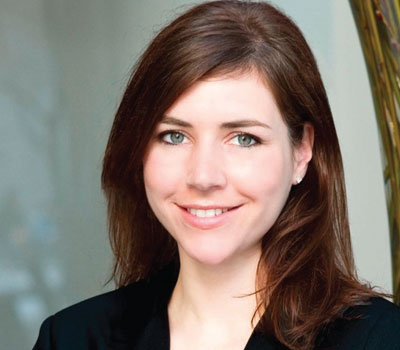

If wine makes up half of your alcoholic beverage sales, what else are people ordering?
We get a lot of people wanting the traditional Swedish beverage experience—beer and aquavit. We try to highlight interesting Swedish and Scandinavian ingredients. We’re trying to source more beers from Scandinavia, and we have our own aquavit, AQ New York, made for us. Also a rip on a classic cocktail from the Waldorf Astoria based on Kronan Swedish Punsch; we’re calling it a “Knock Out.” In the beverage world, there are so many weird things that are new and different, but this is a spirit that is not well explored or appreciated. The traditional pairing for punsch is pea soup…
It looks like you sell more New World wine than Old World. What accounts for that?
We get a lot of tourists. We’re in midtown [Manhattan], a destination restaurant. A lot of our international clients are looking for American wine. Even though it’s Swedish food, it’s kind of “when in Rome…”
What are you restocking the most?
The hardest wines to keep on the list are white Burgundy and grüner veltliner. They go really well with the food. I’m also expanding Alsace—those wines are awesome with the food here. Scandinavians buy a lot of wine, but they don’t make wine. The traditions aren’t there. We can draw from anywhere in the world; it’s experimental and so much fun. Things like herring: I’ve tried just about everything but then went back to aquavit, because nothing beats that pairing… except maybe Sherry.
The menu focuses on seafood and lighter meats. If someone’s going to select only one bottle of wine, we talk about richer styles of white Burgundy. We’ve listed Domaine Leflaive and people are comfortable ordering it. Or for great value Burgundy, Drouhin is really consistent. And I just added the St. Aubin from François and Denis Clair.
Where did guests find their comfort zones this past year?
People are more comfortable buying very value-oriented wines. In the dining room, between $70 and $100 is the sweet spot. That might even feel like a splurge. Of course, we have guests that are looking for a more elaborate experience. Grand Cru Chablis and interestingly enough, Bordeaux. I’m slowly expanding that area. I want to represent all communes in the Médoc and Pomerol.
How did a prosecco turn up among your best selling wines by the glass?
Our prosecco just does really well. I think it’s the price point. Primo Franco came in and did some staff training. For Champagne, we have Lanson. They block all malolactic fermentation but then make up for it with bottle age. So when you get the Black Label Brut, it’s already six years old. You have that complexity but also brightness. With gravlax and all those herbs, it’s fantastic.
How popular is your tasting menu?
Our dining room is only 54 seats, so we can pay a lot of individual attention and make creative decisions. I’d say about 40 percent of diners opt for the tasting menu. It changes so often that I’m having to come up with new pairings all the time. We had an awesome foie gras sorbet, so I got bottles of the Huet Le Mont Demi-Sec.
What is the most exciting bottle you’ve sold in the past few weeks?
A grüner veltliner, which I sold out of – I’m almost afraid to talk about it because I have to replenish my stock. Rudi Pichler’s Hochrain Smaragd. It’s one of those wines that can take you through the whole meal – the whole four-course prix fixe. It’s rich enough and nuanced enough that you can start with a hamachi tartare and go all the way through a pork shoulder or lamb. I was able to open and taste the ’07 Château Rayas, which I just got in on allocation. I’m happy to have it. Lots of people go for Rhône reds. On our menu right now, we have a lamb duo, a lamb loin and neck, which offers more of that gamey interesting flavor. It matched the Rayas very well.















